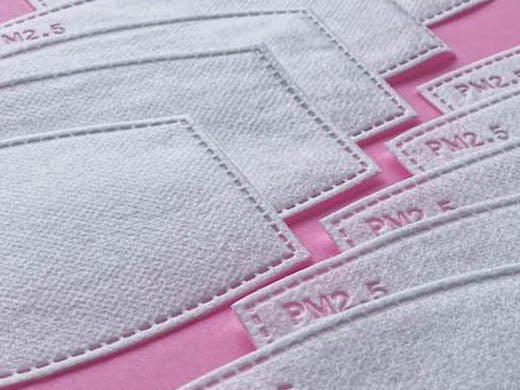
The Third Layer: How To Make Your Own Reusable Mask Filter
Share
Recently, Dr. Theresa Tam, Canada’s Chief Public Health Officer, announced new recommendations regarding face covering and masks. She urges us to consider a three-layer non-medical mask which includes a middle filter layer, particularly as winter approaches and we are likely to be spending more time indoors with family and friends. Check out the announcement here.
While we sell great fitting filters at Unbelts, which you can find on our website here, we thought we’d share instructions on how to make a reusable mask filter at home using polypropylene grocery or shopping bags. Here is what you’ll need to get started:
- Reusable shopping bag made of uncoated polypropylene (see below for info on how to identify polypropylene)
- Filter template - instructions are provided below, but we recommend cardstock for a sturdy, reusable filter template
- Scissors
- Ruler
- Marking tool - either a pen, marker, pencil or chalk, something that you can use to trace your template onto the polyprop bag
How do I know if my bag is made from polypropylene?
Polypropylene comes in many forms, but most reusable shopping or grocery bags will do the trick. Find one that’s lightweight and has a mesh-like, “waffley” texture - this is polypropylene. You can also test the fabric, polypropylene should not fray when you cut it. It’s important to make sure your bag isn’t laminated or coated on either side, or you’ll have difficulty breathing through it. We want to make a safe filter, so we need that oxygen to flow.
Here’s what our bag looked like before it became a filter:

Step 1 - Bag Prep
Wash your bag by machine or by hand with soap or laundry detergent. You’ll be breathing through this, so it needs to be clean and smelling fresh. Allow to air dry. We do not recommend dying in the dryer - the heat will break down the material. If you are able to, use a brand new bag that you’ve washed.
Begin by cutting your bag apart so you can lay the fabric flat. This will make it easier to make the best use of your bag.
Step 2 - Make your mask filter template
We’ve discovered the perfect size filter for our adult and children masks. The photo below shows our “chubby rectangles” and the required dimensions for your adult filters (can be used for teen filters too) and kids filters.
You can create a template from a piece of cardstock to use in making multiple mask filters, or simply draw these onto your fabric using a ruler and your marking tool. Use the measurements provided in the mask filter sizing image below:

Step 3: Trace & Cut Mask Filters
Using your marking tool, trace your filter template onto the bag as many times as you require. Polypropylene doesn’t have a fabric grain, so you can trace out your template in as random of a pattern as you like.

Tip: Make sure you use something unscented, otherwise you’ll have a filter that smells.
Extra Tip: Be aware of using water-soluble markers, they might bleed onto your mask when they’re in the wash. We love using chalk as it dusts off the fabric pretty easily.
Cut out your filter following your tracing using scissors and you’ve got yourself a homemade polypropylene mask filter!

Step 4: Using your Mask Filter
Insert your hand-made reusable polypropylene filters in your Unbelts face mask by inserting it into the filter pocket located between the two layers of cotton fabric.
You can also consider using a mask bracket for increased breathability in your mask. These handy mask brackets give rigidity to your flexible fabric masks and filters creating more room for comfortable breathing. We highly recommend mask brackets for long-term mask wearing. Our staff favourite mask bracket is available on our website. Check them out here.
When using a mask filter and mask bracket together, insert your filter into the pocket closest to the outside coloured fabric so the bracket is closest to your face. See image below for reference.

We hope this “how to” guide for homemade mask filters helps you keep your friends and family safe and comfortable.
Happy mask wearing from the Unbelts team.
Learn more about the new face covering and mask guidelines from the Canadian Public Health Officials here.
